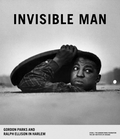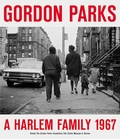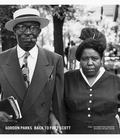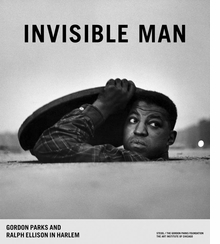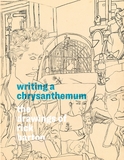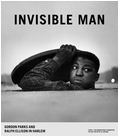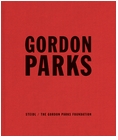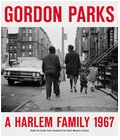ARTBOOK BLOGEventsStore NewsMuseum Stores of the MonthNew Title ReleasesStaff PicksImage GalleryBooks in the MediaExcerpts & EssaysArtbook InterviewsEx LibrisAt First SightThe Artbook 2024 Gift GuidesArtbook Featured Image ArchiveArtbook D.A.P. Events ArchiveDATE 11/8/2024 Kaleidoscopic and dynamic, Orphism comes to the GuggenheimDATE 11/5/2024 Holiday Gift Guide 2024: Where Form Meets FunctionDATE 11/3/2024 Holiday Gift Guide 2024: For the Film BuffDATE 11/2/2024 Holiday Gift Guide 2024: Artful Crowd-PleasersDATE 11/1/2024 Holiday Gift Guide 2024: Stuff that StockingDATE 11/1/2024 Celebrate Native American Heritage Month!DATE 11/1/2024 Hot book alert! 'Belle da Costa Greene: A Librarian’s Legacy' is out now from the Morgan Library & MuseumDATE 10/31/2024 Halloween readingDATE 10/27/2024 Denim deep diveDATE 10/26/2024 Join Artbook | D.A.P. at Shoppe Object High Point, 2024DATE 10/24/2024 Photorealism lives!DATE 10/21/2024 The must-have monograph on Yoshitomo NaraDATE 10/20/2024 'Mickalene Thomas: All About Love' opens at Philadelphia Museum of Art | STAFF PICKS | FROM THE SHELVES
| ||||||||||||||||||||||||
STATUS: Out of stock Temporarily out of stock pending additional inventory. |
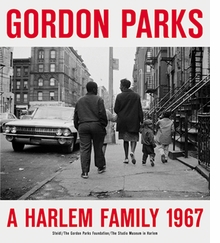 Gordon Parks: A Harlem Family
Gordon Parks: A Harlem Family
Published by Steidl.
Edited by Thelma Golden, Elizabeth Gwinn, Lauren Haynes. Foreword by Raymond J. McGuire.
A Harlem Family 1967 honors the legacy and the work of late iconic artist and photojournalist Gordon Parks, who would have turned 100 on November 30, 2012. The exhibition catalogue is co-published by The Studio Museum in Harlem and The Gordon Parks Foundation and features approximately 80 black-and-white photographs of the Fontenelle family, whose lives Gordon Parks documented as part of a 1968 Life magazine photo essay. A searing portrait of poverty in the United States, the Fontenelle photographs provide a view of Harlem through the narrative of a specific family at a particular moment in time.
PUBLISHER
Steidl
BOOK FORMAT
Clth, 9.75 x 11.5 in. / 112 pgs / illustrated throughout.
PUBLISHING STATUS
Pub Date 1/15/2013
Active
DISTRIBUTION
D.A.P. Exclusive
Catalog: FALL 2014
PRODUCT DETAILS
ISBN 9783869306025 TRADE
List Price: $40.00 CAD $54.00
AVAILABILITY
Out of stock
STATUS: Out of stock Temporarily out of stock pending additional inventory. |
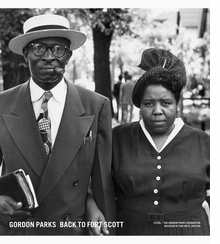 Gordon Parks: Back to Fort Scott
Gordon Parks: Back to Fort Scott
Published by Steidl.
Foreword by Peter W. Kunhardt, Jr. Introduction by Isabel Wilkerson. Text by Karen Haas.
The first African American photographer to be hired full time by Life magazine, Gordon Parks was often sent on assignments involving social issues that his white colleagues were not asked to cover. In 1950 he returned on one such assignment to his hometown of Fort Scott in southeastern Kansas: he was to provide photographs for a piece on segregated schools and their impact on black children in the years prior to Brown v. Board of Education. Parks intended to revisit early memories of his birthplace, many involving serious racial discrimination, and to discover what had become of the 11 members of his junior high school graduation class since his departure 20 years earlier. But when he arrived only one member of the class remained in Fort Scott, the rest having followed the well-worn paths of the Great Migration in search of better lives in urban centers such as St. Louis, Kansas City, Columbus and Chicago. Heading out to those cities Parks found his friends and their families and photographed them on their porches, in their parlors and dining rooms, on their way to church and working at their jobs, and interviewed them about their decision to leave the segregated system of their youth and head north. His resulting photo essay was slated to appear in Life in the spring of 1951, but was ultimately never published. This book showcases the 80-photo series in a single volume for the first time, offering a sensitive and visually arresting view of our country's racialized history.
Gordon Parks (1912–2006) was born into poverty and segregation in Fort Scott, Kansas. The self-taught photographer also found success as a film director, author and composer. He was awarded the National Medal of Arts and over 50 honorary degrees.
PUBLISHER
Steidl
BOOK FORMAT
Clth, 10 x 11.5 in. / 144 pgs / 80 color.
PUBLISHING STATUS
Pub Date 5/26/2015
Out of stock indefinitely
DISTRIBUTION
D.A.P. Exclusive
Catalog: SPRING 2015 p. 33
PRODUCT DETAILS
ISBN 9783869309187 TRADE
List Price: $45.00 CAD $60.00
AVAILABILITY
Not available
STATUS: Out of stock indefinitely. |
the source for books on art & culture
CUSTOMER SERVICE
orders@artbook.com
212 627 1999 ext 202
M-F 10-6 EST
Ingram Customer Care
800-937-8200 option 3
orders@dapinc.com
NEW YORK
Showroom by Appointment Only
75 Broad Street, Suite 630
New York NY 10004
Tel 212 627 1999
LOS ANGELES
Showroom by Appointment Only
818 S. Broadway, Suite 700
Los Angeles, CA 90014
Tel. 323 969 8985
ARTBOOK LLC
D.A.P. | Distributed Art Publishers, Inc.
All site content Copyright C 2000-2023 by Distributed Art Publishers, Inc. and the respective publishers, authors, artists. For reproduction permissions, contact the copyright holders.
The D.A.P. Catalog
www.artbook.com

